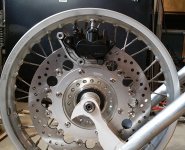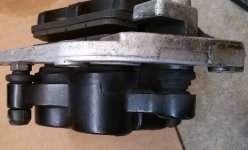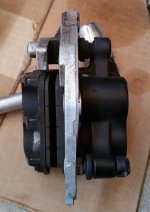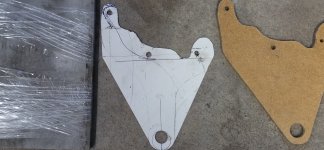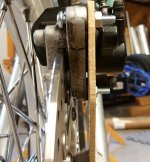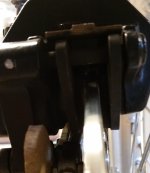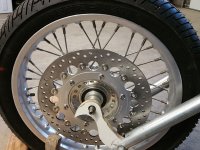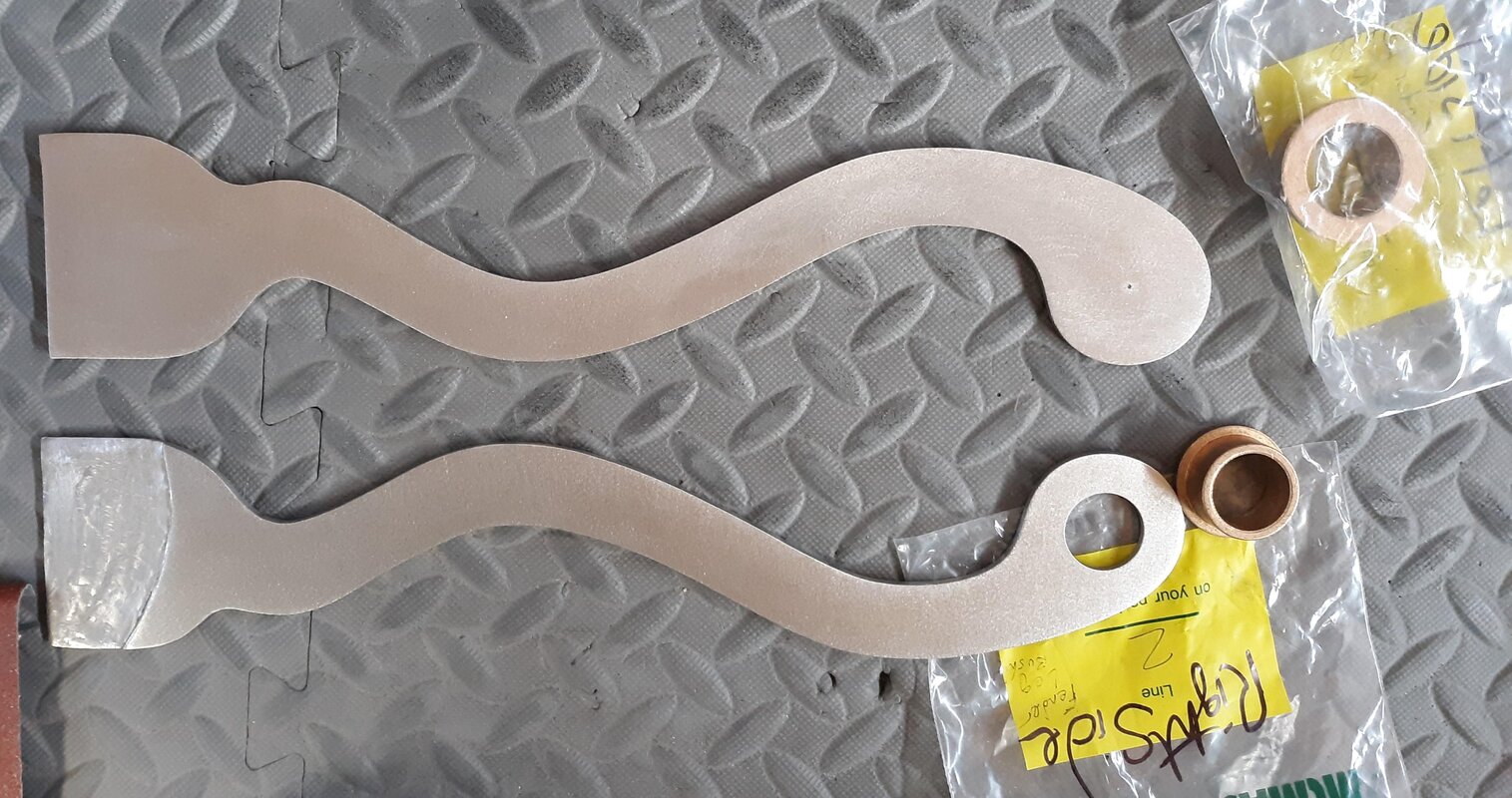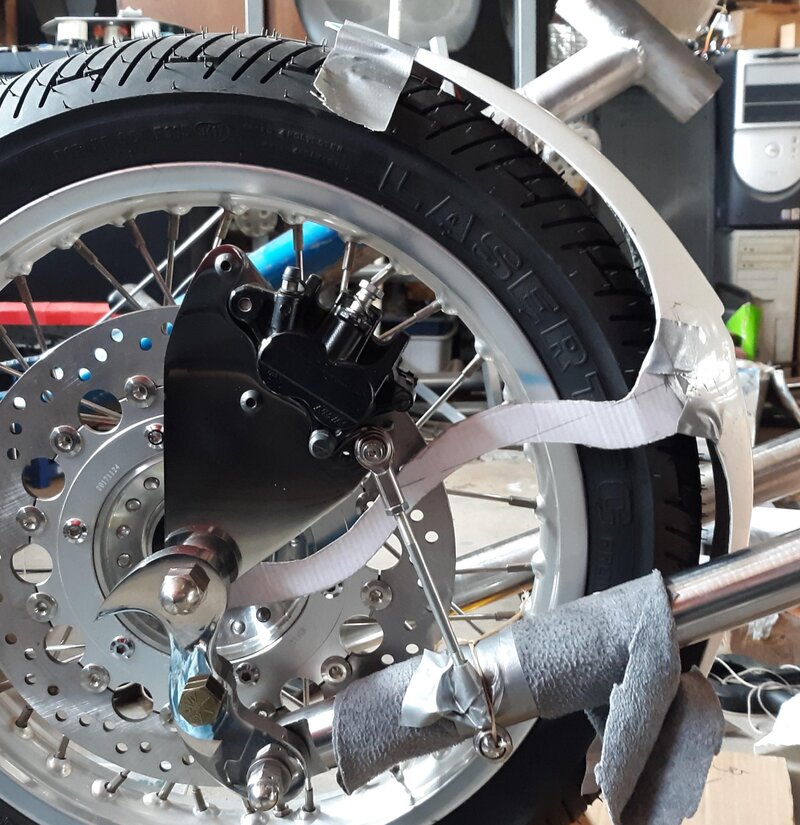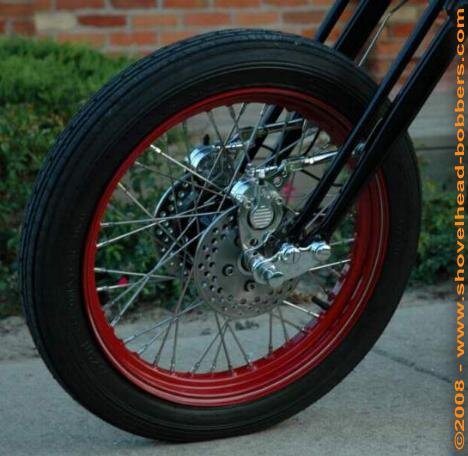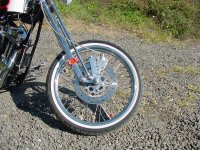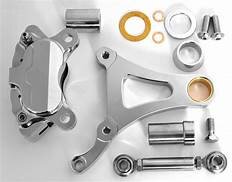stacebg
New member
If it was just a weight transfer issue, you'd be right -- braking transfers weight forward. But with the brake caliper under the swing arm and behind the axle there's a physical, mechanical levering that takes place when you brake. The fulcrum is the axle, the force is the rotation of the caliper around the rotor, and the load is the pivot of the swing arm. As the brakes are applied, the caliper (and therefore the swing arm) wants to follow the rotor around its circle. The direction of rotation levers the pivot of the swing arm (and therefore the trike's front end) upward. No "braking" occurs until the levering force of the rising swing arm end is "stalled" by the weight of the trike.
Now if you hit a bump while the the swing is caliper-locked/arm rising, what happens with the suspension? Will the front still rise against the springs, or is the suspension effectively locked up? My imagination says that the front of the swing arm can't rise when the rear is already rising and locked by the caliper. My imagination sees that the entire front end will hop as though there were struts instead of springs at the spring position.
Any thoughts on that (because I can't know . . .)?
never had a problem with it

